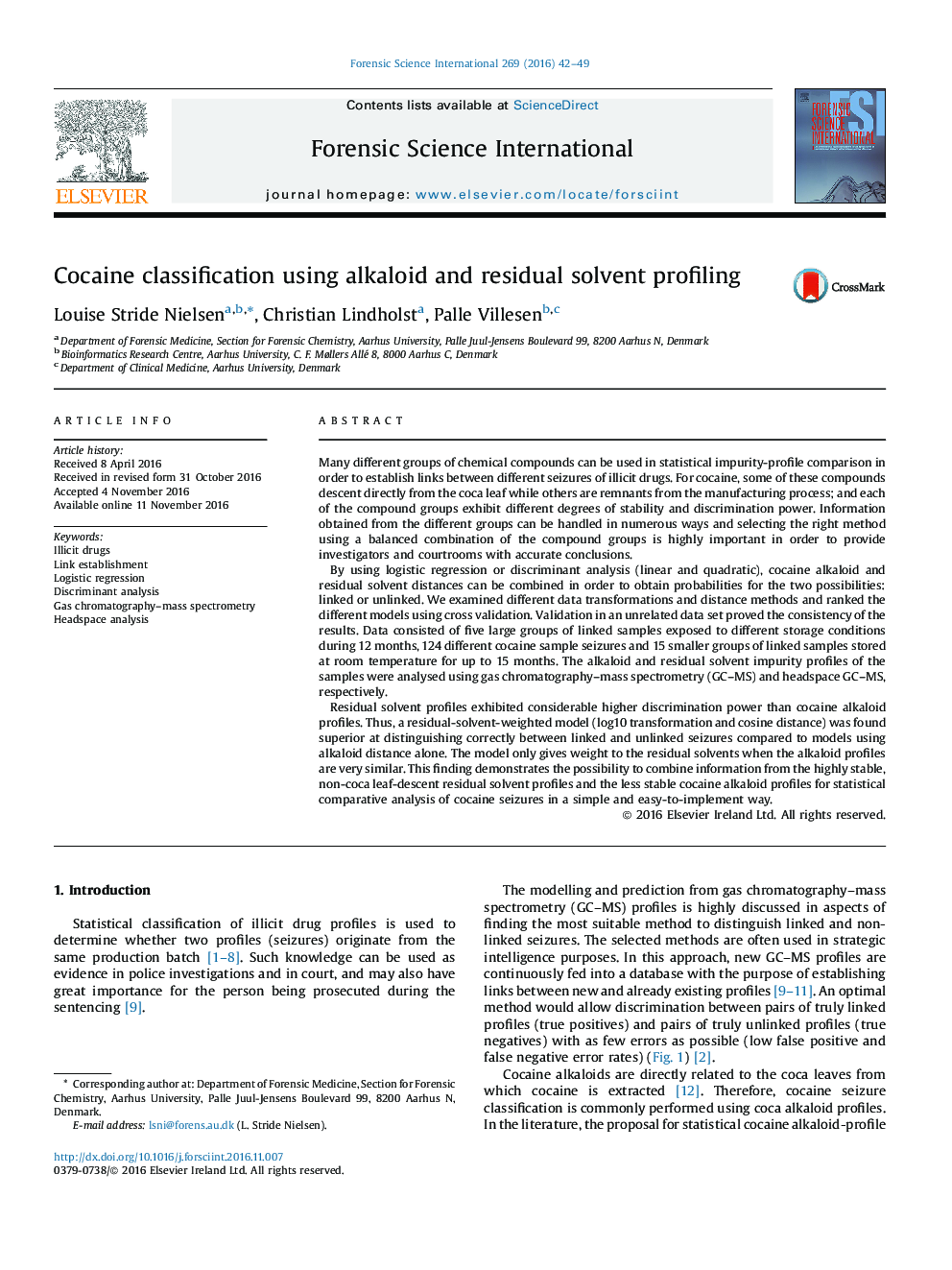| کد مقاله | کد نشریه | سال انتشار | مقاله انگلیسی | نسخه تمام متن |
|---|---|---|---|---|
| 4760361 | 1421981 | 2016 | 8 صفحه PDF | دانلود رایگان |
- Cocaine classification was evaluated using alkaloid and residual solvent profiling.
- Residual solvent profiles exhibit higher discrimination power than alkaloid profiles.
- GLM, LDA and QDA were used to establish residual-solvent-weighted models.
- A residual-solvent-weighted model exhibited optimal classification.
Many different groups of chemical compounds can be used in statistical impurity-profile comparison in order to establish links between different seizures of illicit drugs. For cocaine, some of these compounds descent directly from the coca leaf while others are remnants from the manufacturing process; and each of the compound groups exhibit different degrees of stability and discrimination power. Information obtained from the different groups can be handled in numerous ways and selecting the right method using a balanced combination of the compound groups is highly important in order to provide investigators and courtrooms with accurate conclusions.By using logistic regression or discriminant analysis (linear and quadratic), cocaine alkaloid and residual solvent distances can be combined in order to obtain probabilities for the two possibilities: linked or unlinked. We examined different data transformations and distance methods and ranked the different models using cross validation. Validation in an unrelated data set proved the consistency of the results. Data consisted of five large groups of linked samples exposed to different storage conditions during 12 months, 124 different cocaine sample seizures and 15 smaller groups of linked samples stored at room temperature for up to 15 months. The alkaloid and residual solvent impurity profiles of the samples were analysed using gas chromatography-mass spectrometry (GC-MS) and headspace GC-MS, respectively.Residual solvent profiles exhibited considerable higher discrimination power than cocaine alkaloid profiles. Thus, a residual-solvent-weighted model (log10 transformation and cosine distance) was found superior at distinguishing correctly between linked and unlinked seizures compared to models using alkaloid distance alone. The model only gives weight to the residual solvents when the alkaloid profiles are very similar. This finding demonstrates the possibility to combine information from the highly stable, non-coca leaf-descent residual solvent profiles and the less stable cocaine alkaloid profiles for statistical comparative analysis of cocaine seizures in a simple and easy-to-implement way.
Journal: Forensic Science International - Volume 269, December 2016, Pages 42-49
